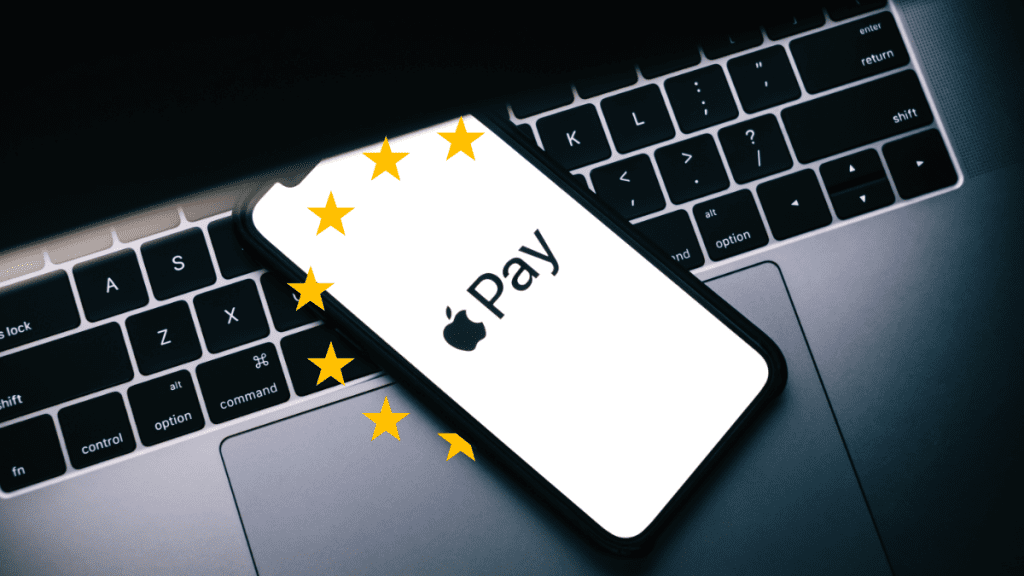
Apple is now forced to allow Apple Pay alternatives to use its tap-to-pay technology.
- The EU gave Apple a simple choice; modify your practices or pay a hefty fine.
- While the revenue from Apple Pay will take a tumble, the mobile payment market in Europe will get a much-needed boost.
The European Union (EU) has forced Apple to allow Apple Pay alternatives to use its tap-to-pay technology, possibly boosting the mobile payment market in the region.
Digital wallets (e-wallets) allow users to complete transactions through their smartphone and smartwatches, without using physical cards or cash. While the concept is the same, not every e-wallet process payments the same way.
Apple’s near-field communication (NFC) allows two devices to exchange information when placed close to one another. Meanwhile, Samsung uses both NFC and Magnetic Secure Transmission (MST), which transmits a magnetic signal to the payment terminal’s card reader.
EU Market
In the EU, people are gravitating toward digital wallets and contactless payments. A study on people’s attitudes toward payment in countries that fully embraced the euro showed that 55% of consumers prefer cards and other cashless payment options.
Currently, the market size for mobile payments in Europe estimated $108.35 billion, according to Mordor Intelligence, with a predicted reach of $373.29 billion by 2029. The major players are Apple Pay and four of its alternatives, Google Pay, Amazon Pay, Samsung Pay, and PayPal.
Seeing how fast we’re diving into a cashless future, the EU is covering its basis to make the market as fair as possible, much to some tech giants’ dismay.
Sharing is Caring, Apple
In true Apple fashion, which centers around a closed and coveted garden, Apple Pay has the exclusive right to use NFC tech on iPhones. In the EU’s eyes, however, this exclusivity fosters anti-competitiveness. As a result, and to avoid a $40 billion fine under the EU Digital Markets Act (DMA), the iPhone maker has agreed to allow Apple Pay alternatives to use its tap-to-pay tech for the next decade.
Speaking with journalists, the Union’s competition chief, Margrethe Vestager, said, “iPhone users will [now] be able to use their preferred mobile wallet for payments in stores… while enjoying all the iPhone functionalities, including double click, tap-and-go, and Face ID.”
In a statement to CNN, Apple explained that developers can now “enable NFC contactless payments and contactless transactions for car keys, closed-loop transit, corporate badges, home keys, hotel keys, merchant loyalty/rewards, and event tickets from within their iOS apps.”
The Greater Good
This is a winning situation for consumers and Apple Pay alternatives, but not so much for Apple, as the giant brought in an estimated $2.06 billion in revenue from Apple Pay worldwide in 2023, marking an almost 40% increase from 2022. However, considering that there are approximately 101 million iPhone users in the EU, Apple might see a nosedive in profits following this development. Also, the tech giant will not be recouping the difference in Apple Pay fees, since it will not charge the alternatives for NFC usage.
On the other hand, Europe’s mobile payment market may experience a boost. The increased competition may lead to better services and lower costs for consumers. Also, iPhone users will have a wider selection of Apple Pay alternatives, which will most probably lead to an increase in e-wallet adoption.
Final Thoughts
Apple’s closed garden model has long stood in the way of other businesses. With the EU enforcing fairer practices, Apple Pay alternatives can finally have their day in the sunlight.
Inside Telecom provides you with an extensive list of content covering all aspects of the tech industry. Keep an eye on our Tech sections to stay informed and up-to-date with our daily articles.